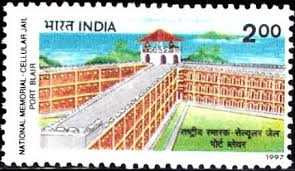
At Sanganer prison, in the Indian city of Jaipur, inmates get a roof over their head, but no money and no food.
This prison has no bars or walls, no security guards at the gate, and prisoners are allowed – even encouraged – to go out into the city and work every day.
This prison, which has been open since the 1950s, is home to 450 prisoners and is one of about 30 such institutions in the State of Rajasthan.
I go to Sanganer with Smita Chakraburtty, the woman behind a campaign to make open prisons the norm across India. “The criminal justice system addresses an incident … and doesn’t know what to do with an individual,” Chakraburtty argues. Her cause is gaining momentum: four other States in India established new open prisons last year.
I sit on the floor in a children’s nursery at the front of the prison grounds and talk with a group of men and women who are inmates. When I ask them why they’re in prison, many simply say, “302,” referring to Section 302 in India’s Penal Code which dictates the punishment for murder.
To get to Sanganer, they all have to have served at least two-thirds of their sentences in closed prisons. Every day, most of them leave the prison grounds to earn a living: men convicted of murder work as security guards, factory workers and daily labourers. I even meet one inmate who’s a yoga instructor and another who’s a supervisor in a nearby school. The only real rule, I’m told, is that the prisoners must make roll call every evening.
BBC, Feb. 4, 2019
https://www.bbc.com/news/stories-47093046
Source: https://www.weboflove.org/
Image: A stamp issued by India post in 1997 depicting the Cellular Jail in Andaman & Nicobar Islands to commemorate the centenary of the Philatelic Society of India (1897-1997). Known also as ‘Kālā Pānī’ (Hindi for ‘Black Water’), the jail was used by the colonial government of India for the purpose of exiling criminals and political prisoners. Today it is a historic national memorial of India. Image courtesy Wikimedia Commons.
